Analysis of Land Surface Temperature Dynamics in Islamabad by Using MODIS Remote Sensing Data
Abstract
:1. Introduction
2. Materials and Methods
2.1. Study Area
2.2. Data Acquisition
2.3. Software Usage
- IDRISI package from the TerrSet software (version 18.08) developed by Clark Labs at Clark University, Worcester, MA, USA was used to ascertain the spatiotemporal trends in the surface temperature whereby image processing and enhancement were carried out (http://clarklabs.org, accessed on 15 December 2021).
- Earth Trends Modeler from the TerrSet software was used to calculate the seasonal trends followed by image decomposition to generate a time series to gain insight into the reoccurring sequence of spatiotemporal trends.
- R-Software (3.3.5 version) an open source project in 1995, initially written by Robert Gentleman and Ross Ihaka—also known as “R & R” of the Statistics Department of the University of Auckland, Auckland, New Zealand was used to configure seasonal decomposition of time series by Loess (STL) which is a computationally simple non-parametric method (http://www.r-project.org, accessed on 15 December 2021). The seasonal component that is found by Loess works on smoothing the seasonal sub-series, i.e., if s., the window which is the Loess window for seasonal extraction is equal to periodic (s. window =”periodic”) smoothing is effectively replaced by taking the mean.
- The non-parametric Mann–Kendall test was incorporated to detect significant trends in the time series. Application of Mann–Kendall tests helped to gain the probability (P) and standard score (Z) values.
- ArcGIS 9.3 Desktop software developed and maintained by ESRI, Redlands, CA, USA https://www.esri.com/en-us/arcgis/products/arcgis-online, accessed on 15 December 2021) was used in this study. ArcGIS is a software that assists to analyze mapped information and managing information in a database. It provides an infrastructure for making maps and geographic information available. P, Z, R2, linear slope, and trend maps in the study were produced by the use of spatial data frame within the software. Spatial data frame is similar to spreadsheets that have fields in form of columns.
- Box and whisker graphical representations were used for the interpretation of the distribution of the data and to depict the variability of the numerically arranged data. They aided in determining the seasonal variability in Islamabad from the year 1960 to 2012 (Figure 2).
3. Results
4. Discussion
5. Conclusions
- For a developing country such as Pakistan, where the emerging metropolitan cities are under greater threat of changing climatic and seasonal patterns, there is a stronger need for developing and implementing policies and adaptation strategies for considering the importance of climatic changes in the field of planning, designing, and implementing developmental activities.
- The development of new institutions and modification of the existing ones should be practiced so that adaptation to climate change must be promoted whereby aspects such as environmental management, building/infrastructure controls, and town planning regulations must be taken into account. However, in this case, it is important to revise the master plan for Islamabad as well as the building bylaws and town planning regulations.
- Developmental projects should leave a sufficient amount of green space in order to combat climate change; therefore, the capacity of provincial governments should be improved so that they can devise their own climate change policies, strategies, and action plans.
Author Contributions
Funding
Institutional Review Board Statement
Informed Consent Statement
Data Availability Statement
Acknowledgments
Conflicts of Interest
References
- IPCC. Summary for Policymakers: Global Warming of 1.5 °C, Global Warming of 1.5 °C: An IPCC Special Report on the Impacts of Global Warming of 1.5 °C; IPCC: Geneva, Switzerland, 2018. [Google Scholar]
- Arshad, S.; Ahmad, S.R.; Abbas, S.; Asharf, A.; Siddiqui, N.A.; ul Islam, Z. Quantifying the contribution of diminishing green spaces and urban sprawl to urban heat island effect in a rapidly urbanizing metropolitan city of Pakistan. Land Use Policy 2022, 113, 105874. [Google Scholar]
- Oo, H.T.; Zin, W.W.; Kyi, C.C.T. Assessment of future climate change projections using multiple global climate models. Civ. Eng. J. 2019, 5, 2152–2166. [Google Scholar]
- Jaber, S.M.; Abu-Allaban, M.M. MODIS-based land surface temperature for climate variability and change research: The tale of a typical semi-arid to arid environment. Eur. J. Remote Sens. 2020, 53, 81–90. [Google Scholar]
- IPCC. Climate Change 2013: The Physical Science Basis: Working Group I Contribution to the Fifth Assessment Report of the Intergovernmental Panel on Climate Change; Cambridge University Press: Cambridge, UK, 2014. [Google Scholar]
- Duan, S.-B.; Li, Z.-L.; Wu, H.; Leng, P.; Gao, M.; Wang, C. Radiance-based validation of land surface temperature products derived from Collection 6 MODIS thermal infrared data. Int. J. Appl. Earth Obs. Geoinf. 2018, 70, 84–92. [Google Scholar]
- Moon, M.; Li, D.; Liao, W.; Rigden, A.J.; Friedl, M.A. Modification of surface energy balance during springtime: The relative importance of biophysical and meteorological changes. Agric. For. Meteorol. 2020, 284, 107905. [Google Scholar]
- Mauder, M.; Foken, T.; Cuxart, J. Impact of urban morphology and landscape characteristics on spatiotemporal heterogeneity of land surface temperature. Bound.-Layer Meteorol. 2020, 177, 395–426. [Google Scholar]
- Yu, P.; Zhao, T.; Shi, J.; Ran, Y.; Jia, L.; Ji, D.; Xue, H. Global spatiotemporally continuous MODIS land surface temperature dataset. Sci. Data 2022, 9, 1–15. [Google Scholar]
- Sun, Y. Retrieval and Application of Land Surface Temperature; University of Texas at Austin: Austin, TX, USA, 2011; Volume 1. [Google Scholar]
- Rajeshwari, A.; Mani, N.D. Estimation of land surface temperature of Dindigul district using Landsat 8 data. Int. J. Res. Eng. Technol. 2014, 3, 122–126. [Google Scholar]
- Duan, S.-B.; Li, Z.-L.; Zhao, W.; Wu, P.; Huang, C.; Han, X.-J.; Gao, M.; Leng, P.; Shang, G. Validation of Landsat land surface temperature product in the conterminous United States using in situ measurements from SURFRAD, ARM, and NDBC sites. Int. J. Digit. Earth 2021, 14, 640–660. [Google Scholar]
- Duan, S.-B.; Li, Z.-L.; Li, H.; Göttsche, F.-M.; Wu, H.; Zhao, W.; Leng, P.; Zhang, X.; Coll, C. Validation of Collection 6 MODIS land surface temperature product using in situ measurements. Remote Sens. Environ. 2019, 225, 16–29. [Google Scholar]
- Rehman, Z.; Kazmi, S.J.H.; Khanum, F.; Samoon, Z.A. Analysis of land surface temperature and NDVI using geo-spatial technique: A case study of Keti Bunder, Sindh, Pakistan. J. Basic Appl. Sci. 2015, 11, 514–527. [Google Scholar]
- Wan, Z. New refinements and validation of the MODIS land-surface temperature/emissivity products. Remote Sens. Environ. 2008, 112, 59–74. [Google Scholar]
- Barat, A.; Kumar, S.; Kumar, P.; Parth Sarthi, P. Characteristics of surface urban heat island (SUHI) over the Gangetic Plain of Bihar, India. Asia-Pac. J. Atmos. Sci. 2018, 54, 205–214. [Google Scholar]
- Chetia, S.; Saikia, A.; Basumatary, M.; Sahariah, D. When the heat is on: Urbanization and land surface temperature in Guwahati, India. Acta Geophys. 2020, 68, 891–901. [Google Scholar]
- Soltani, A.; Sharifi, E. Daily variation of urban heat island effect and its correlations to urban greenery: A case study of Adelaide. Front. Archit. Res. 2017, 6, 529–538. [Google Scholar]
- Ravanelli, R.; Nascetti, A.; Cirigliano, R.V.; Di Rico, C.; Leuzzi, G.; Monti, P.; Crespi, M. Monitoring the impact of land cover change on surface urban heat island through Google Earth Engine: Proposal of a global methodology, first applications and problems. Remote Sens. 2018, 10, 1488. [Google Scholar]
- Yao, R.; Wang, L.; Huang, X.; Liu, Y.; Niu, Z.; Wang, S.; Wang, L. Long-term trends of surface and canopy layer urban heat island intensity in 272 cities in the mainland of China. Sci. Total Environ. 2021, 772, 145607. [Google Scholar]
- Schwarz, N.; Manceur, A.M. Analyzing the influence of urban forms on surface urban heat islands in Europe. J. Urban Plan. Dev. 2015, 141, A4014003. [Google Scholar]
- Rani, S.; Mal, S. Trends in land surface temperature and its drivers over the High Mountain Asia. Egypt. J. Remote Sens. Sp. Sci. 2022, 25, 717–729. [Google Scholar]
- Parida, B.R.; Bar, S.; Kaskaoutis, D.; Pandey, A.C.; Polade, S.D.; Goswami, S. Impact of COVID-19 induced lockdown on land surface temperature, aerosol, and urban heat in Europe and North America. Sustain. Cities Soc. 2021, 75, 103336. [Google Scholar]
- Zhao, Z.; Sharifi, A.; Dong, X.; Shen, L.; He, B.-J. Spatial variability and temporal heterogeneity of surface urban heat island patterns and the suitability of local climate zones for land surface temperature characterization. Remote Sens. 2021, 13, 4338. [Google Scholar]
- Bera, B.; Bhattacharjee, S.; Shit, P.K.; Sengupta, N.; Saha, S. Correlation Analysis between Air Temperature and MODIS Land Surface Temperature and Prediction of Air Temperature Using TensorFlow Long Short-Term Memory for the Period of Occurrence of Cold and Heat Waves. Environ. Dev. Sustain. 2021, 23, 6913–6940. [Google Scholar]
- Brabyn, L.; Stichbury, G. Calculating the surface melt rate of Antarctic glaciers using satellite-derived temperatures and stream flows. Environ. Monit. Assess. 2020, 192, 1–14. [Google Scholar]
- Shiff, S.; Helman, D.; Lensky, I.M. Worldwide continuous gap-filled MODIS land surface temperature dataset. Sci. Data 2021, 8, 1–10. [Google Scholar]
- Zhang, H.; Zhang, F.A.N.; Zhang, G.; Ma, Y.; Yang, K.U.N.; Ye, M. Daily air temperature estimation on glacier surfaces in the Tibetan Plateau using MODIS LST data. J. Glaciol. 2018, 64, 132–147. [Google Scholar]
- Williamson, S.N.; Hik, D.S.; Gamon, J.A.; Kavanaugh, J.L.; Flowers, G.E. Estimating temperature fields from MODIS land surface temperature and air temperature observations in a sub-arctic alpine environment. Remote Sens. 2014, 6, 946–963. [Google Scholar]
- Bao, Y.; Chen, S.; Liu, Q.; Xiao, Q.; Cao, C. Land surface temperature and emissivity retrieval by integrating MODIS data onboard Terra and Aqua satellites. Int. J. Remote Sens. 2011, 32, 1449–1469. [Google Scholar]
- Zorer, R.; Rocchini, D.; Metz, M.; Delucchi, L.; Zottele, F.; Meggio, F.; Neteler, M. Daily MODIS land surface temperature data for the analysis of the heat requirements of grapevine varieties. IEEE Trans. Geosci. Remote Sens. 2012, 51, 2128–2135. [Google Scholar]
- Sadiq Khan, M.; Ullah, S.; Sun, T.; Rehman, A.U.R.; Chen, L. Land-use/land-cover changes and its contribution to urban heat Island: A case study of Islamabad, Pakistan. Sustainability 2020, 12, 3861. [Google Scholar]
- Yang, J.; Wang, Y.; Xiu, C.; Xiao, X.; Xia, J.; Jin, C. Land surface temperature and energy expenditures of households in the Netherlands: Winners and losers. J. Clean. Prod. 2020, 275, 123767. [Google Scholar]
- Kumar, K.S.; Deepak, B.A.; Kumar, A.C.; Mounika, C.; Prasad, T.V. Study on urban surface temperature changes of vijayawada city using remote sensing and GIS. Int. J. Innov. Res. Adv. Eng. 2015, 2, 98–102. [Google Scholar]
- Hassan, T.; Zhang, J.; Prodhan, F.A.; Pangali Sharma, T.P.; Bashir, B. Surface urban heat islands dynamics in response to lulc and vegetation across south asia (2000–2019). Remote Sens. 2021, 13, 3177. [Google Scholar]
- Kikon, N.; Singh, P.; Singh, S.K.; Vyas, A. Assessment of urban heat islands (UHI) of Noida City, India using multi-temporal satellite data. Sustain. Cities Soc. 2016, 22, 19–28. [Google Scholar]
- Waseem, S.; Khayyam, U. Loss of vegetative cover and increased land surface temperature: A case study of Islamabad, Pakistan. J. Clean. Prod. 2019, 234, 972–983. [Google Scholar]
- Khandelwal, S.; Goyal, R.; Kaul, N.; Singhal, V. Study of land surface temperature variations with distance from hot spots for urban heat island analysis. In Proceedings of the Geospatial World Forum, Theme Dimensions and Directions of Geospatial Industry, Hyderabad, India, 18–21 January 2011; pp. 18–21. [Google Scholar]
- Baqa, M.F.; Lu, L.; Chen, F.; Nawaz-ul-Huda, S.; Pan, L.; Tariq, A.; Qureshi, S.; Li, B.; Li, Q. Characterizing Spatiotemporal Variations in the Urban Thermal Environment Related to Land Cover Changes in Karachi, Pakistan, from 2000 to 2020. Remote Sens. 2022, 14, 2164. [Google Scholar]
- Saeed, A. Pakistan Suffered $15 Billion Loss Due to Floods in Three Years. Bus. Rec. 2014. Available online: http:/www.brecorder.com/top-stories/ (accessed on 3 April 2022).
- Iqbal, K.M.J.; Khan, M.I. Climate Governance: Implementing Water Sector Adaptation Strategies in Pakistan. Policy Perspect. 2018, 15, 139–155. [Google Scholar] [CrossRef]
- Safdar, U.; Shahbaz, B.; Ali, T.; Ali, S. Impact of climate change on agriculture in North West Pakistan and adaptation strategies of farming community: A case study of Kaghan Valley. J. Agric. Res. 2014, 52, 597–606. [Google Scholar]
- UN-Habitat. Cities and Climate Change Initiative-Abridged Report: Islamabad Pakistan, Climate Change Vulnerability Assessment; United Nations Hum. Settlements Program; UN-Habitat: Nairobi, Kenya, 2014; Available online: http//www.fukuoka.unhabitat.org/programmes/ccci/pdf/Islamabad\_23\_February\_2015\_FINAL(5th\_revision).pdf (accessed on 7 March 2016).
- Saeed, F. El Niño: A Looming Disaster. 2016. Published by The Third Pole. Opinion Article. Available online: https://www.thethirdpole.net/en/climate/el-nino-a-looming-disaster/ (accessed on 3 April 2022).
- Akbari, H.; Bell, R.; Brazel, C.; Estes, M.; Heisler, G.; Hitchcock, D.; Johnson, B.; Lewis, G.; Oke, T.; Parker, D.; et al. Reducing Urban Heat Islands: Compendium of strategies—Urban Heat Isl. Basics. U.S. Environmental Protection Agency’s Office of Atmospheric Programs. 2014; pp. 1–22. Available online: https://www.epa.gov/sites/default/files/2014-06/documents/basicscompendium.pdf (accessed on 20 March 2022).
- Fujibe, F. Urban warming in Japanese cities and its relation to climate change monitoring. Int. J. Climatol. 2011, 31, 162–173. [Google Scholar]
- IPCC. Synthesis Report: Summary for Policy Makers; IPCC: Geneva, Switzerland, 2014. [Google Scholar]
- Chen, X.L.; Zhao, H.M.; Li, P.X.; Yin, Z.Y. Remote Sensing Image-Based Analysis of the Relationship between Urban heat island and land use/cover Changes. Remote Sens. Environ. 2007, 104, 133–146. [Google Scholar]
- GoP. Facts & Statistics of Islamabad 2016. Government of Pakistan. 2016. Available online: https://www.cda.gov.pk/about_islamabad/vitalstats.asp (accessed on 3 December 2021).
- APP Climate Change Causing One Day Addition in Summer Season Annually. Dly. Times 2016. Available online: https://dailytimes.com.pk/80420/climate-change-causing-one-day-addition-in-summer-season-annually/ (accessed on 24 May 2016).
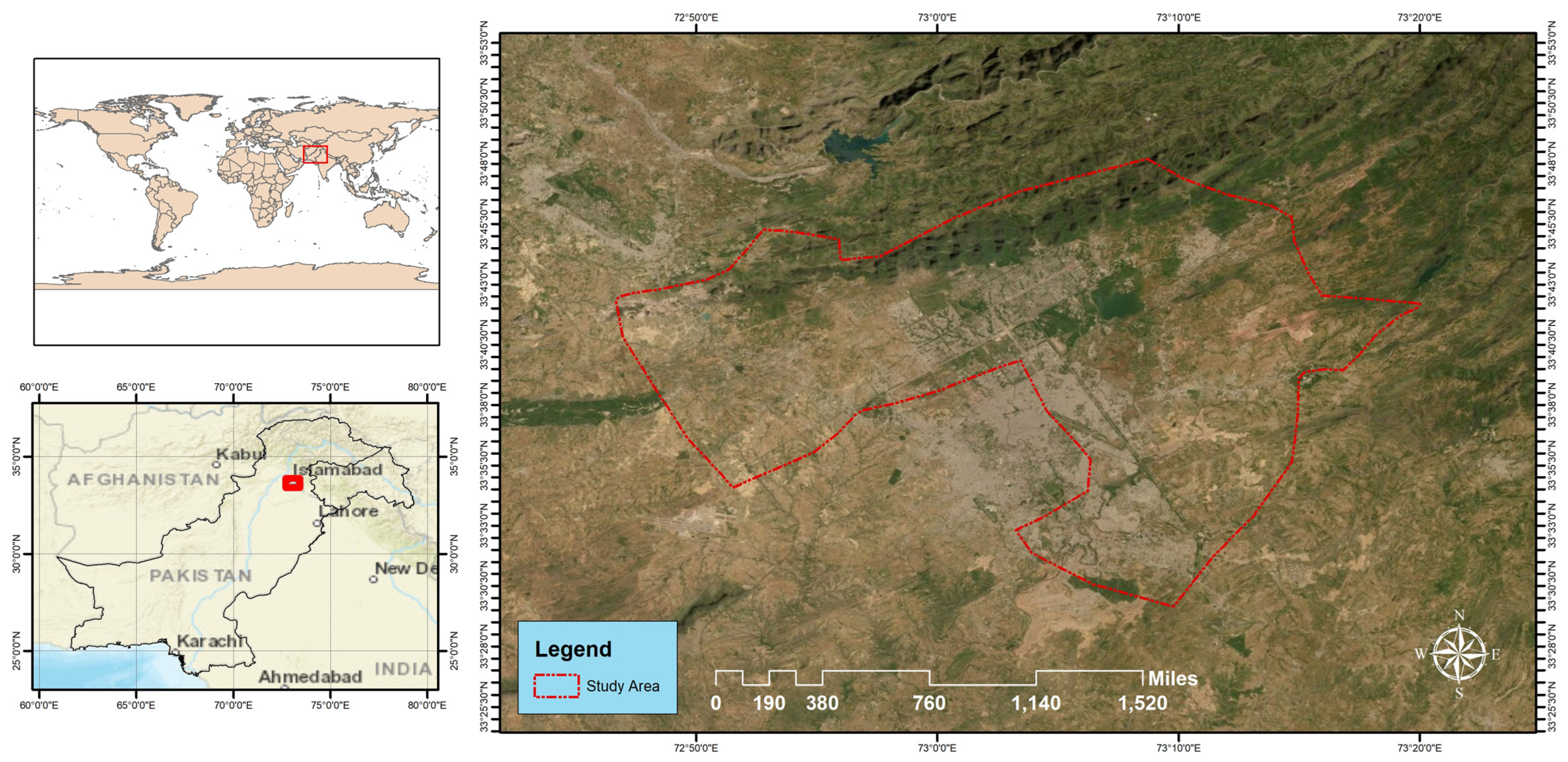


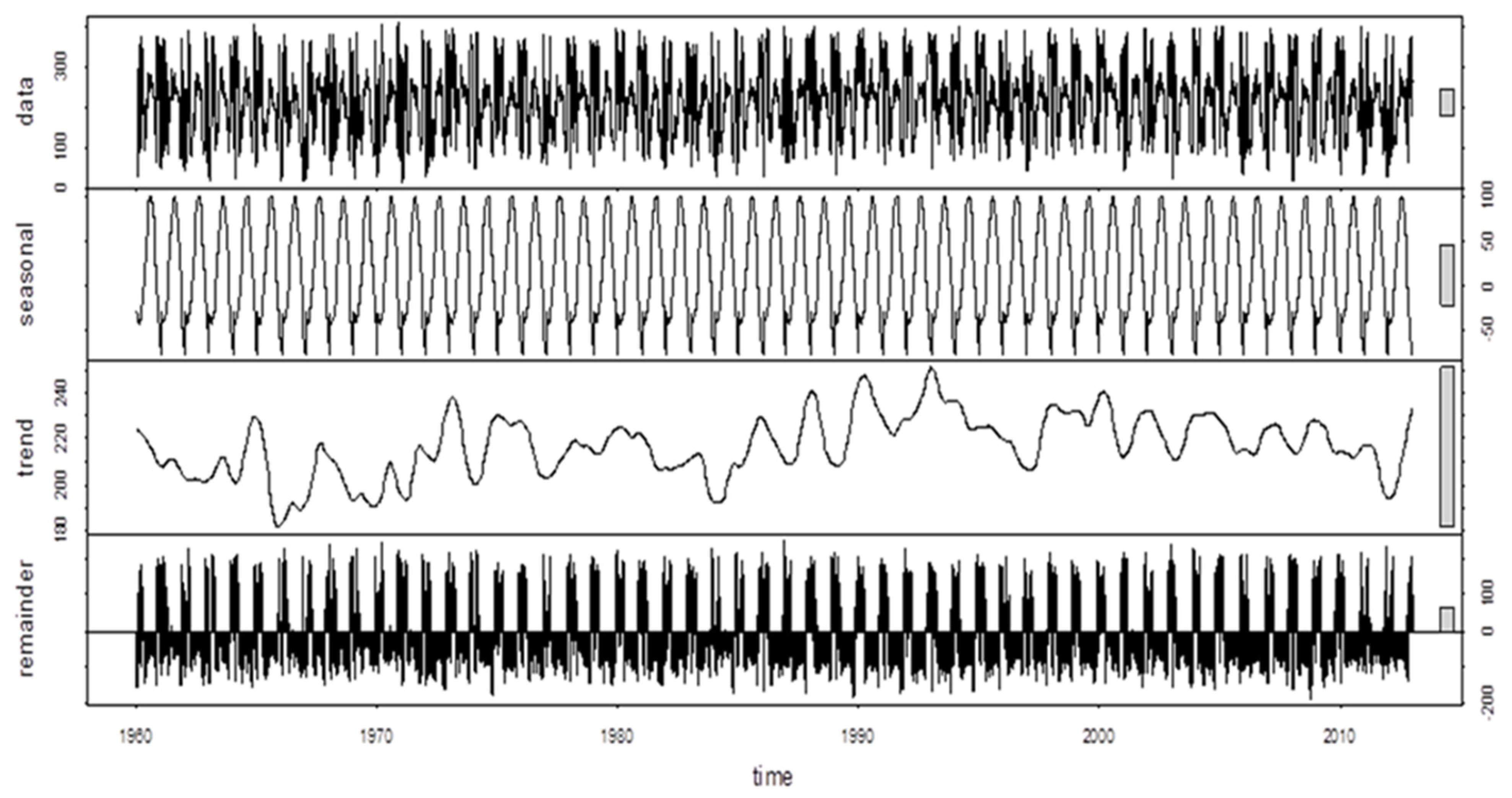
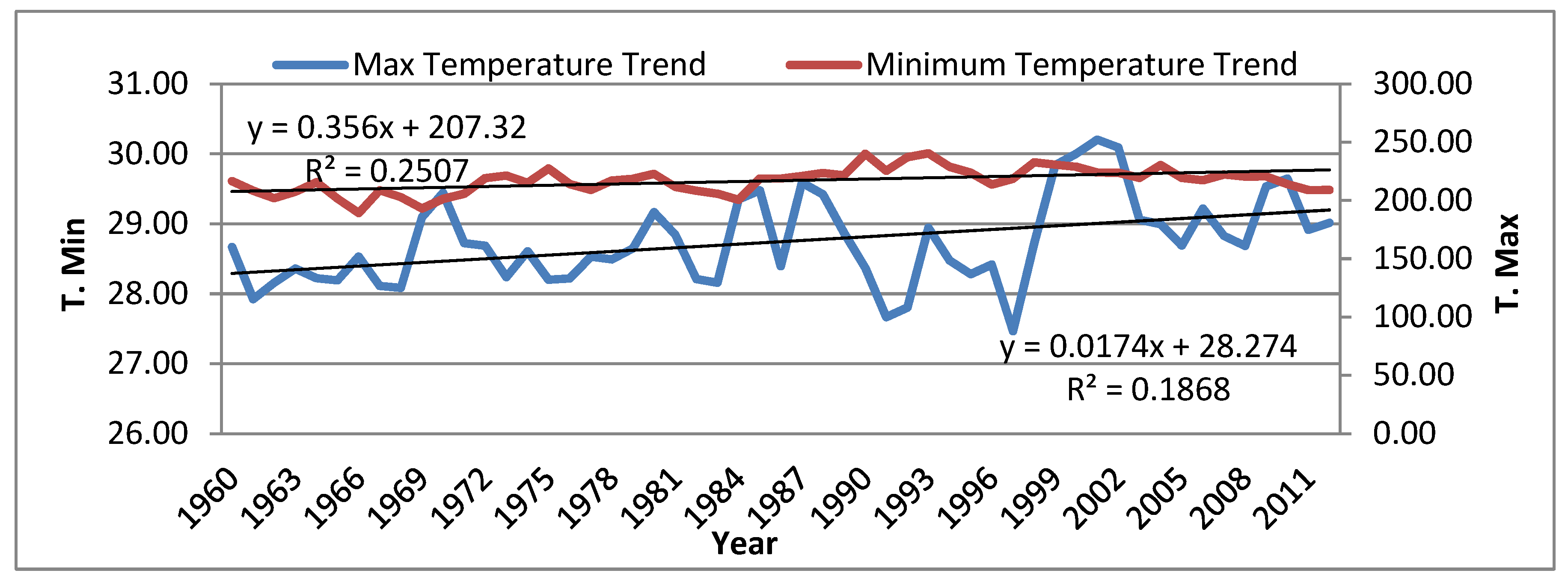


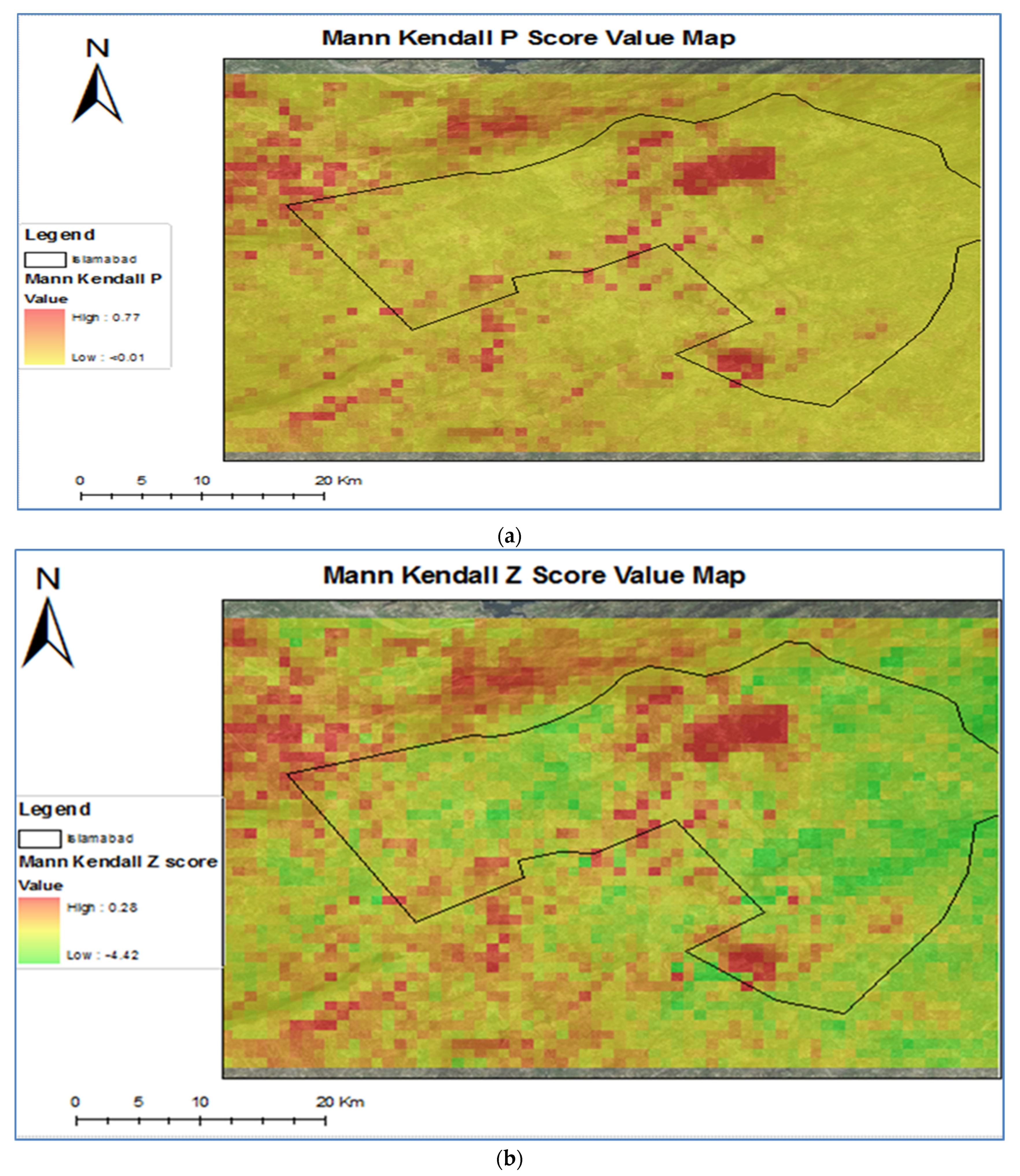
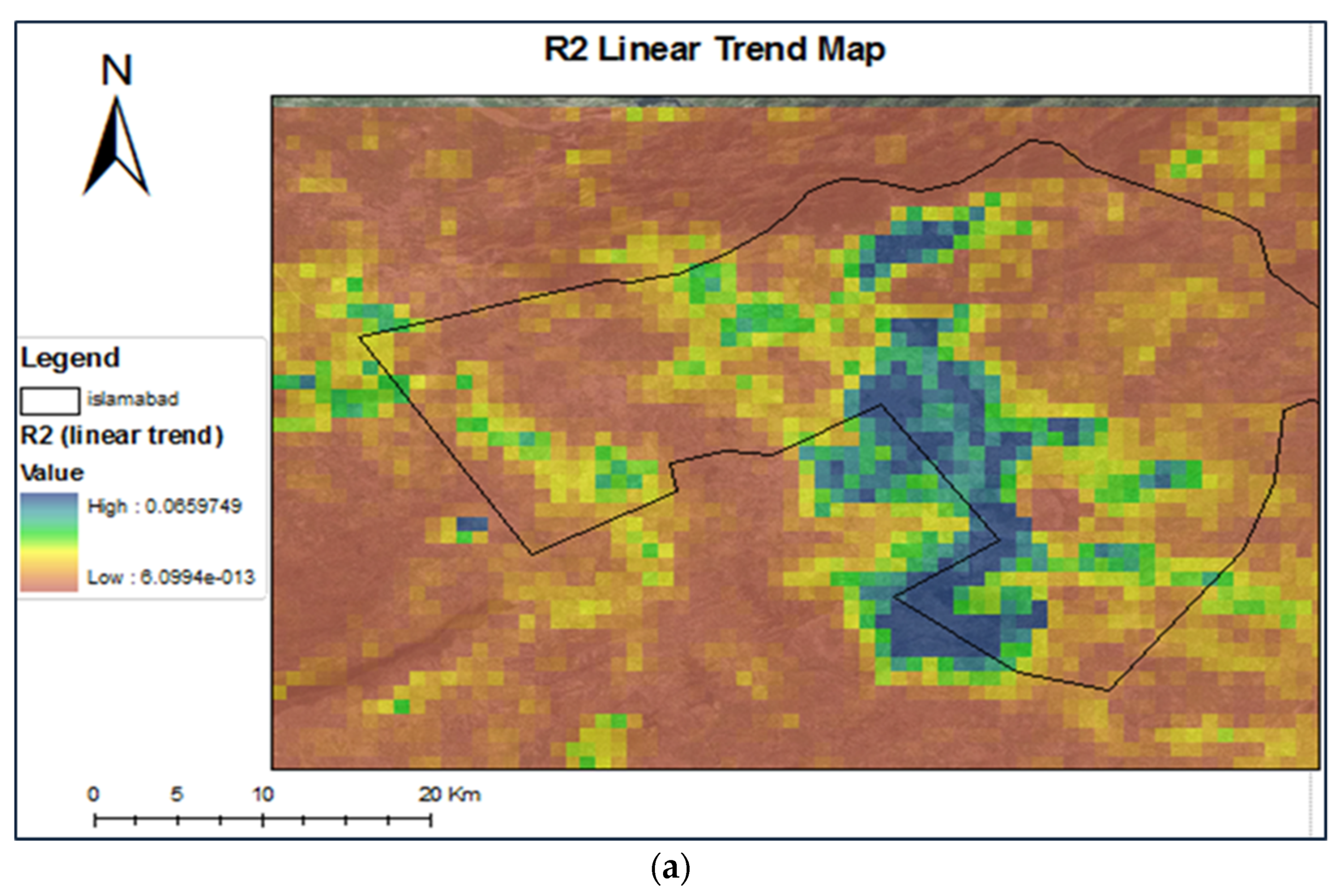
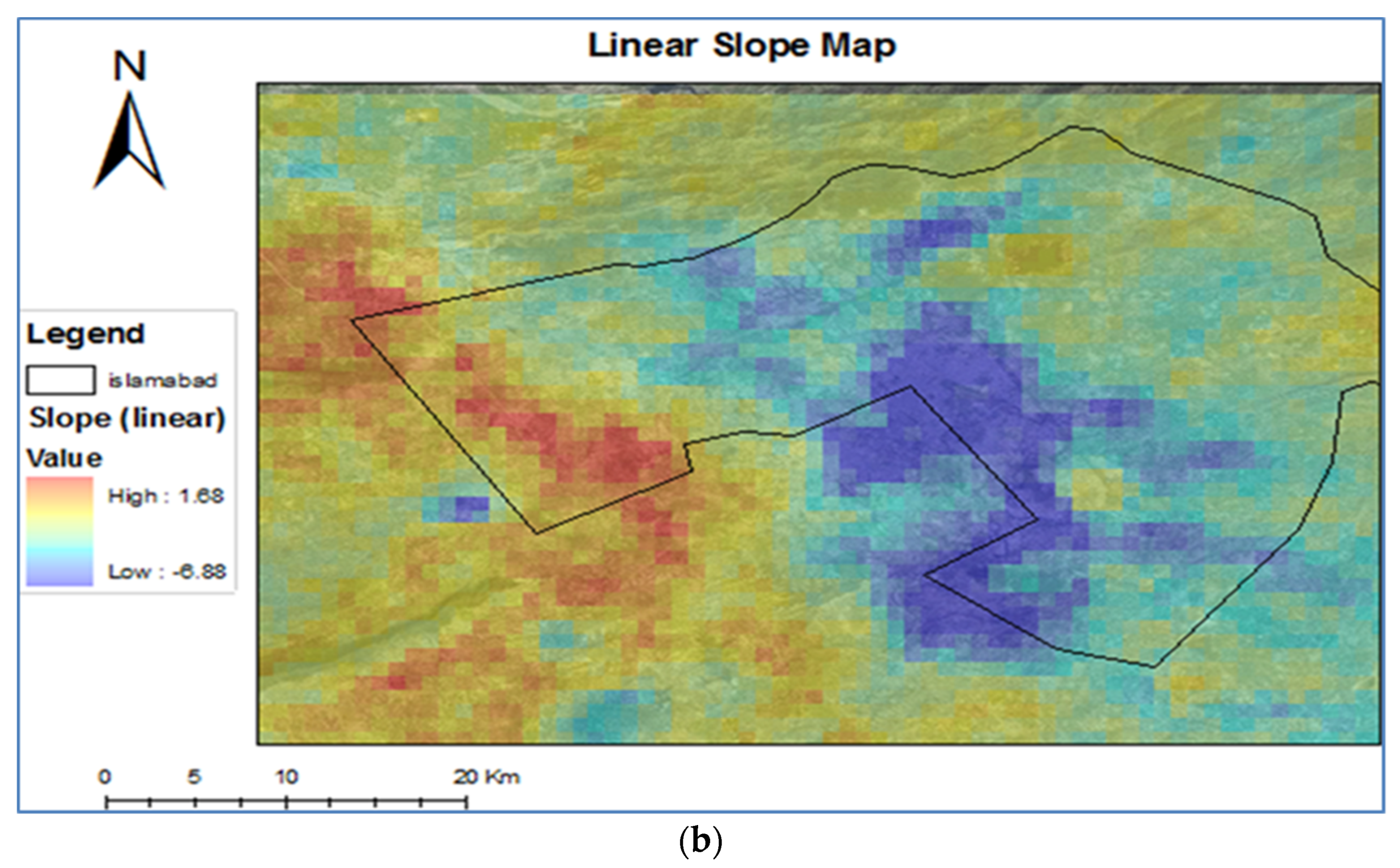
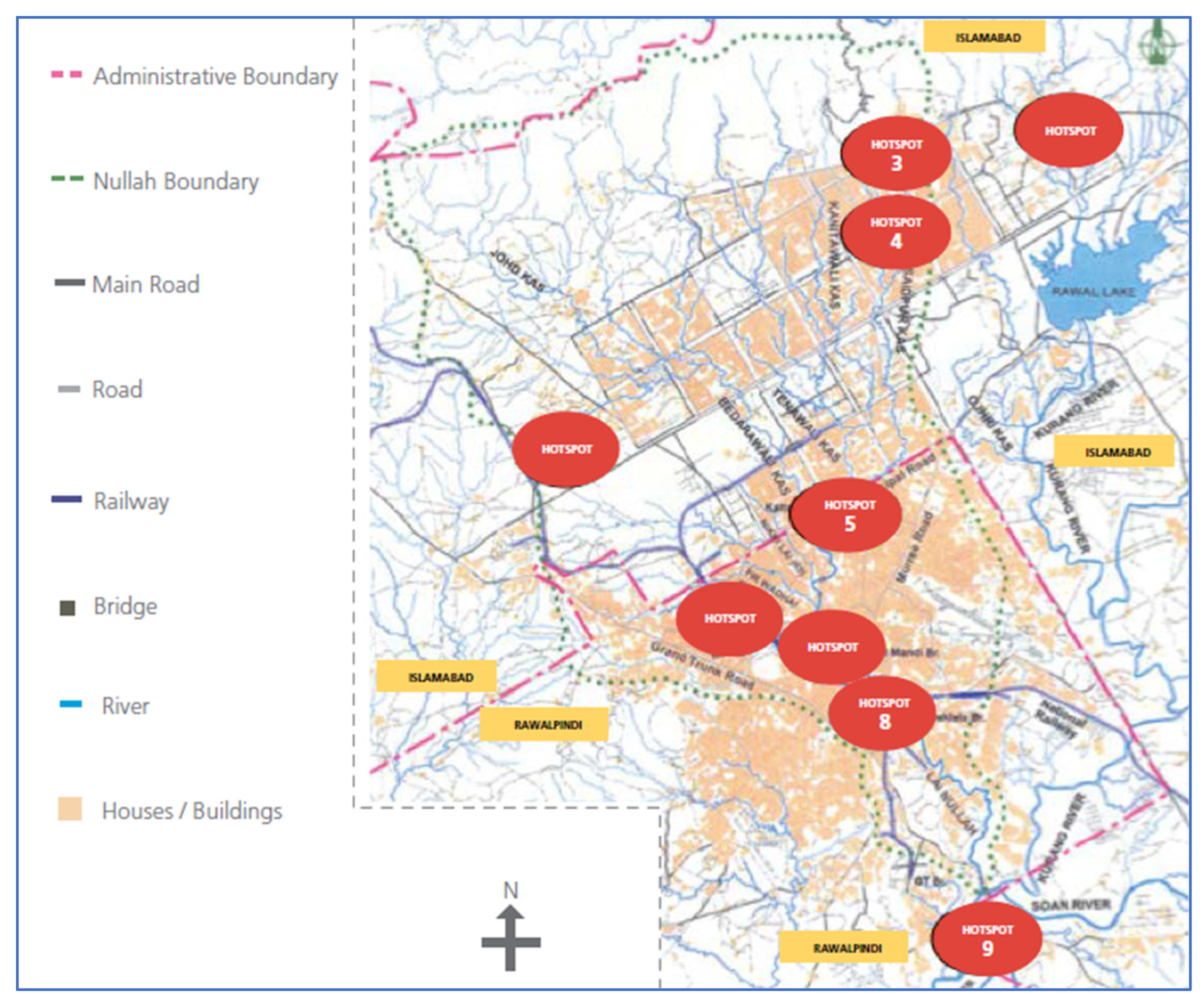
Publisher’s Note: MDPI stays neutral with regard to jurisdictional claims in published maps and institutional affiliations. |
© 2022 by the authors. Licensee MDPI, Basel, Switzerland. This article is an open access article distributed under the terms and conditions of the Creative Commons Attribution (CC BY) license (https://creativecommons.org/licenses/by/4.0/).
Share and Cite
Wasif Ali, N.u.A.B.; Amir, S.; Iqbal, K.M.J.; Shah, A.A.; Saqib, Z.; Akhtar, N.; Ullah, W.; Tariq, M.A.U.R. Analysis of Land Surface Temperature Dynamics in Islamabad by Using MODIS Remote Sensing Data. Sustainability 2022, 14, 9894. https://doi.org/10.3390/su14169894
Wasif Ali NuAB, Amir S, Iqbal KMJ, Shah AA, Saqib Z, Akhtar N, Ullah W, Tariq MAUR. Analysis of Land Surface Temperature Dynamics in Islamabad by Using MODIS Remote Sensing Data. Sustainability. 2022; 14(16):9894. https://doi.org/10.3390/su14169894
Chicago/Turabian StyleWasif Ali, Noor ul Ain Binte, Sarah Amir, Kanwar Muhammad Javed Iqbal, Ashfaq Ahmad Shah, Zafeer Saqib, Nadia Akhtar, Wahid Ullah, and Muhammad Atiq Ur Rehman Tariq. 2022. "Analysis of Land Surface Temperature Dynamics in Islamabad by Using MODIS Remote Sensing Data" Sustainability 14, no. 16: 9894. https://doi.org/10.3390/su14169894








